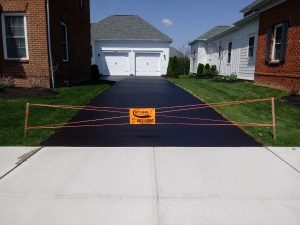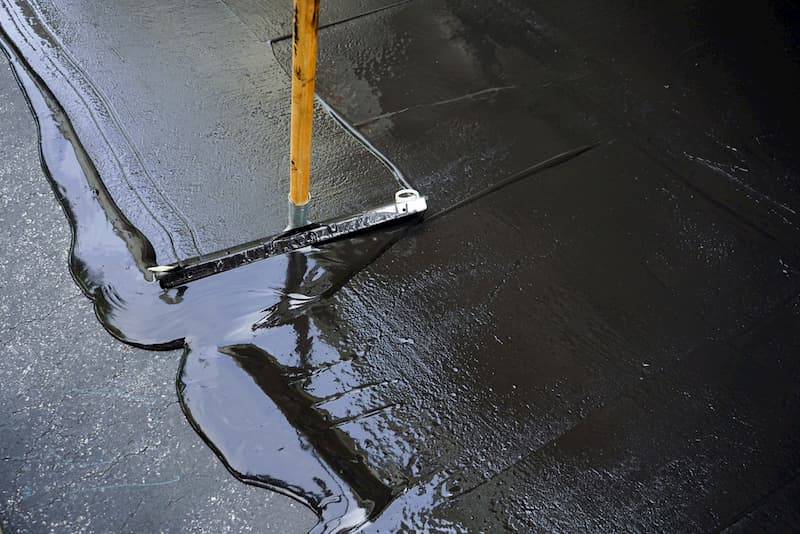Optimize Sturdiness: Hot Mix Asphalt Sealing for Angled Parking Structures
Optimize Sturdiness: Hot Mix Asphalt Sealing for Angled Parking Structures
Blog Article
Warm Mix Asphalt: A Sustainable Option for Sidewalk
Hot Mix Asphalt (HMA) has emerged as a leading sustainable option for sidewalk remedies, offering a myriad of ingenious modern technologies and ecological benefits. As the need for green building practices grows, exploring the nuances of HMA's sustainability can offer important insights into the future of sidewalk remedies.
Environmental Benefits of Warm Mix Asphalt

Moreover, Warm Mix Asphalt assists to reduce metropolitan warm island effects. Its dark shade soaks up sunlight, lowering the amount of heat mirrored back right into the atmosphere contrasted to lighter-colored sidewalks. This can lower ambient temperatures in city locations, decreasing the demand for cooling and ultimately decreasing power intake.
In addition, Hot Mix Asphalt contributes to enhanced stormwater monitoring. Its permeable nature permits water to reenergize and penetrate the sidewalk groundwater supplies, decreasing overflow and the threat of flooding. These ecological advantages make Warm Mix Asphalt a lasting option for paving freeways and roadways.
Energy Effectiveness in HMA Manufacturing
Is energy effectiveness a critical variable in the manufacturing of Warm Mix Asphalt (HMA)? Absolutely. Energy plays a significant role in the manufacturing of HMA, influencing both price and ecological sustainability. One crucial element of energy efficiency in HMA production is using cozy mix asphalt (WMA) innovations (commercial parking lot paving). WMA enables the blending and placement of asphalt at lower temperature levels compared to standard warm mix asphalt, resulting in minimized energy consumption throughout manufacturing. This process not just decreases gas use but likewise decreases greenhouse gas emissions, making it a much more eco-friendly choice.
Moreover, innovations in plant technologies have led to even more energy-efficient HMA manufacturing procedures. Modern plants are designed with attributes like recycled asphalt pavement (RAP) handling capabilities, effective burner systems, and boosted insulation, all adding to energy cost savings. By enhancing power use in HMA production, the industry can decrease its carbon footprint while maintaining high-quality sidewalk products. Energy performance is, as a result, a crucial factor to consider in ensuring the sustainability of Hot Mix Asphalt manufacturing.
Recyclability of Warm Mix Asphalt
The recyclability of Warm Mix Asphalt (HMA) is an essential element of its sustainability and long-term environmental influence. HMA is just one of the most recycled materials in the USA, with over 100 million lots of redeemed asphalt pavement (RAP) being recycled yearly in brand-new pavement building and construction. Recycling HMA uses several ecological advantages, such as decreasing the need for virgin materials, reducing power consumption throughout manufacturing, and decreasing the quantity of waste sent to landfills.
The process of recycling HMA entails milling the existing pavement, squashing it right into smaller sized pieces, and blending it with new accumulation and asphalt binder to create a recycled mix. This recycled mix can usually perform in addition to or perhaps much better than conventional HMA, while calling for fewer resources and generating reduced greenhouse gas emissions. By integrating RAP right into brand-new sidewalk projects, road companies can preserve natural deposits, decrease prices, and decrease the environmental footprint of road building and upkeep tasks. In general, the recyclability of HMA plays a substantial role in advertising lasting practices within the sidewalk market.

Long-Term Performance of HMA
Asphalt pavements demonstrate resilience and durability over a prolonged period, reflecting the lasting efficiency of Warm Mix Asphalt (HMA) Furthermore, developments in HMA technology, such as the usage of polymer-modified binders and cozy mix asphalt, have even more enhanced the durability and longevity of HMA pavements. By prioritizing quality construction and maintenance practices, HMA proceeds to confirm itself as a lasting and economical solution for resilient sidewalk framework.

HMA: Longevity and Sustainability
Demonstrating both sturdiness and sustainability, Warm Mix Asphalt (HMA) has ended up being a keystone in the construction of lasting pavement facilities - regrading. HMA's durability comes from its ability to stand up to heavy lots, rough climate condition, and high traffic quantities, making it a reliable choice for streets, freeways, and flight terminal paths. The structure of HMA, which normally consists of aggregates, binder, and filler, plays a vital duty in boosting its longevity and resistance to tear and wear
Moreover, HMA's sustainability lies in its recyclability and energy-efficient production process. The capability to reuse recovered asphalt pavement (RAP) in new HMA mixes reduces the need for virgin materials and reduces the environmental impact of pavement construction and maintenance. Additionally, the power effectiveness of creating HMA hinges on its lower blending temperature levels contrasted to other sidewalk products, causing reduced power intake and greenhouse gas exhausts.
Verdict
Finally, warm mix asphalt (HMA) supplies a sustainable solution for sidewalk with its eco pleasant qualities. HMA's recyclability, energy efficiency in manufacturing, and lasting resilience make it an environmentally friendly choice for roadway building and construction. By saving natural sources, minimizing waste, and lowering greenhouse gas emissions, HMA plays a vital role in advertising sustainability in facilities development. Its ability to reduce city heat island results even more highlights its importance in developing environmentally aware and resilient sidewalk systems.
HMA is one of the most recycled materials in the United States, with over 100 million heaps of redeemed asphalt pavement (RAP) being recycled yearly in new sidewalk building and construction.The process of reusing HMA includes crushing the existing pavement, squashing it right into smaller pieces, and blending it with new aggregate and asphalt binder to develop a recycled mix.Asphalt pavements show resilience and strength commercial parking lot paving over an extended duration, showing the lasting efficiency of Hot Mix Asphalt (HMA) Furthermore, innovations in HMA technology, such as the use of polymer-modified binders and warm mix asphalt, have actually better enhanced the sturdiness and long life of HMA sidewalks. The capacity to reuse reclaimed asphalt pavement (RAP) in new HMA blends lowers the need for virgin materials and minimizes the environmental impact of pavement building and maintenance.
Report this page